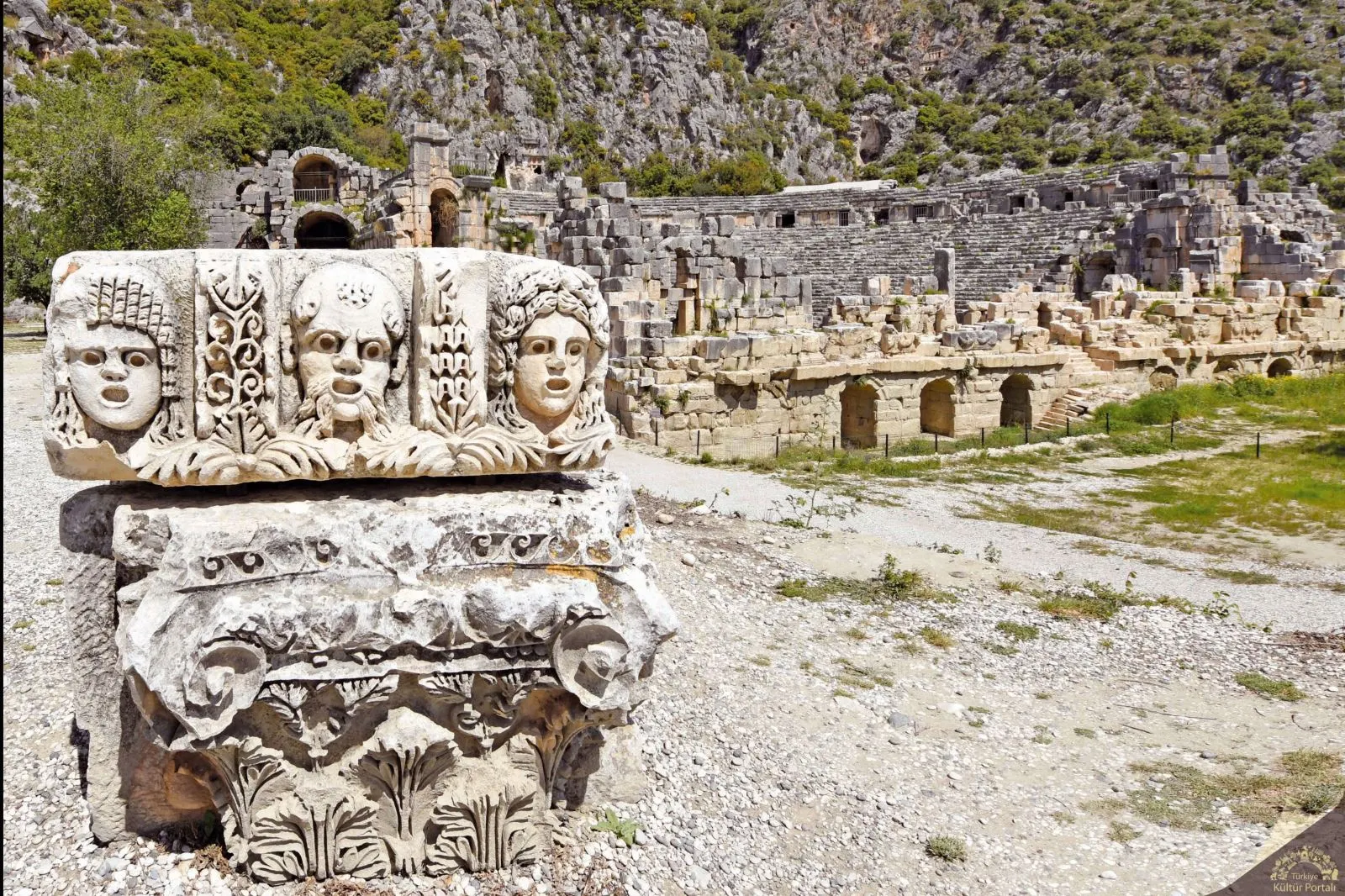Myra Ancient City
Description
The ancient city of Myra, located in and around today's Demre district center, was founded on the plain of the same name. The city's connection with the sea was provided by the transportation channel (Demre Stream) to the west of the Myros River. The maritime transportation and trade of the region was carried out from Andriake (Çayağzı) Harbor on the other side of the canal. The ancient city of Myra is especially famous for its Lycian rock tombs, Roman theater and Byzantine St. Nicholas Church (Santa Claus).
Rock tombs, Lycian inscriptions and coins show that Myra has existed at least since the 5th century BC. According to Strabo, Myra, one of the six major cities of the Lycian League, is referred to as Myrrh in Lycian inscriptions.
The 2nd century AD was a period of great development in Myra. As the metropolis of the Lycian League, many buildings were built and repaired with the help of wealthy Lycians. During the Byzantine Period, Myra became one of the leading cities both administratively and religiously. Myra owes its fame to the fact that St. Nicholas (Santa Claus) became the bishop of the city in the 4th century AD, and after his death he was declared a saint and a church was built in his name.
Myra lost its importance from the 7th century onwards due to earthquakes, floods, alluvial deposits brought by the Demre Stream and Arab raids, and turned into a village in the 12th century. Today's ruins consist of the theater on the southern slope of the acropolis and the rock tombs on both sides. According to researches, apart from the Roman walls, which are quite intact today, it is possible to come across the remains of walls dating back to the Hellenistic and even the 5th century BC on and around the acropolis hill. The theater located at the southern foot of the Acropolis reflects the characteristics of a well-preserved Roman theater with its seating rows and stage building. The stage building is standing up to half of the second floor. On both sides of the theater are rock tombs with reliefs or flat rock tombs.
Among the tombs of Myra, which are the most beautiful examples of the wooden house architecture of the Lycians adapted to rock tombs, the tomb with reliefs depicting the dead and their relatives is one of the most interesting examples. In addition, many rock tombs with reliefs or inscriptions are lined up on top of each other or side by side on the south-facing face of the rock. The ruins of the baths near the theater on the left side of the road on the way to the city center constitute early and interesting examples of Roman brick architecture.
The city's water needs were met from the canals carved into the rock on the edge of the valley where the Demre Stream flows. Myra was one of the six cities with three votes in the Lycian Confederation, and the fact that it was called "the brightest city" shows how important it was. In addition to the coins of the Lycian Confederation, Myra's coins minted under its own name, the representation of the city's mother goddess Artemis in the form of Cybele, the oldest goddess of Anatolia, is of particular importance. The fact that Myra, which was the capital of the Lycian province in the 5th century A.D., was the city where St. Paul and his friends visited, has a special importance for Christianity.
Short Description
The ancient city of Myra, located in and around today's Demre district center, was founded on the plain of the same name. The city's connection with the sea was provided by the transportation channel (Demre Stream) to the west of the Myros River. The maritime transportation and trade of the region was carried out from Andriake (Çayağzı) Harbor on the other side of the canal. The ancient city of Myra is especially famous for its Lycian rock tombs, Roman theater and Byzantine St. Nicholas Church (Santa Claus).
Rock tombs, Lycian




